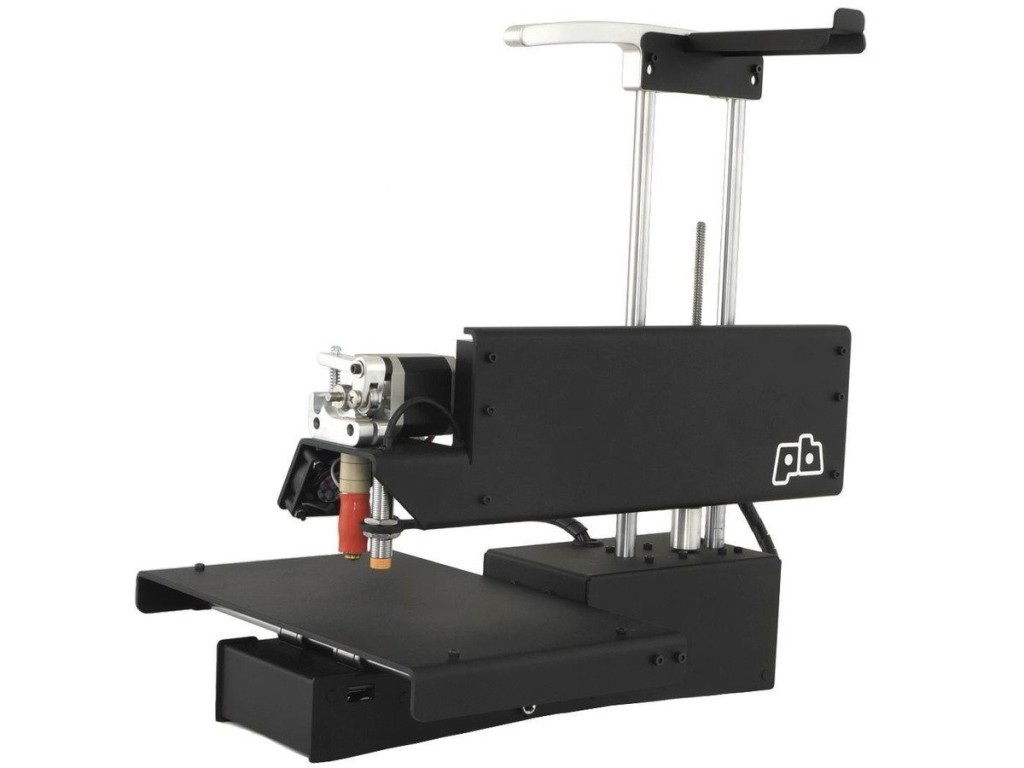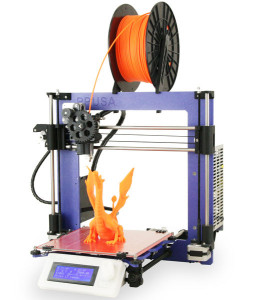Introduction
Over the next few weeks, I will be designing* and constructing a 3D printer, focusing on an aesthetic which will fit in my living room or even kitchen. So many home-built 3D printers and printer kits are bare skeletons of extruded aluminum and rods, with tangles of wire harnesses and exposed components. While this is typically the easiest approach for DIYers (as they don’t have to mess with building a complex frame that doesn’t add any strict functionality to the printer), I don’t think it really fulfills/reinforces/encourages the idea that everyone will someday have a 3D printer in their home. Moreover, I think that industrial designers put considerable effort into making household tools and appliances beautiful (everything from hot water kettles to stereo players) and a printer should be no different.
Project Scope
As this is an “aesthetics of design” class, I think I am going to focus more on the aesthetics this semester than creating a fully functional printer. Thus: I do not expect to be able to readily print anything by May (with the intention to work on the project more over the summer). Rather, I expect to have all of the mechanical components designed, fabricated, and assembled for presentation as part of this class. My goal is to focus on bringing an aesthetic to an otherwise commonplace homemade 3D printer setup.
First Impressions
I want this piece to be presentable in my living room, bedroom, or kitchen, and thus I want it to fit in with the surroundings of a typical house or apartment. This project will hopefully make even skeptics of 3D printing want a unit of their own as a fashion/design statement within their homes. Unfortunately, at this point I have a better idea of what I don’t want this project to look like, than what I really do. As I’ve mentioned, most printer kits, walk-through projects, and entry-level printers that you can find online look pretty bare-boned. Here are some examples:


One option that does look pretty good is the Micro by M3D. However, its small build volume and limited customizability options make this a fairly entry-level printer.

Design Direction
I have several constraints that I would like to meet in my design. First, I’d like to ensure that the build volume is comparable to the nicer (~$2500) printers, which are roughly 25cm x 15cm x 15cm. Many of the kits out there and entry-level options are smaller by comparison (the printrbot above does 15cm x 15cm x 15cm, the M3D does 13cm x 11cm x 11cm). Having the ability to do larger builds is great for around-the-house sort of projects.
I’m planning on following the build instructions for a kit called the “Prusa Mendel i3”, which is a “RepRap” design. This category of printers is open-source and contains lots of support materials online. While this model is bare-bones like all of the others, I’m planning to build a custom enclosure for it.

I have a cool sketch of what I’m hoping it will look like, but the WordPress site won’t upload it. I’ll save it for next week.
Timeline
I’m planning to order parts this weekend, and then start tinkering with it every free moment afterwards!

9 Comments. Leave new
This looks cool, I can’t wait to see how you pull this off. Printing off all of pieces could be expensive. Tell me how how much it costs you.
Chip, I think this is a great Idea. I also think its very smart to limit the scope of the project for the semester. We’ve talked pretty extensively about different aesthetics that could be applied to this but I really like the concept of making it fit into the modern household. I think trying to mimic appliances is as good way to achieve that. Can’t wait to see this thing start to come together!
I think you ended up finding a pretty great project here. You have huge potential for aesthetics with this project!
I second the wood idea Kenzy mentioned using different stains and types of wood (or just one) would look really neat. I think a big part of the more eye-pleasing M3D is the minimal nature of the whole design. I don’t know if this poses a major engineering task to keep things serviceable and functioning well but I think you should try to go minimal. Where does the filament live in the M3D? In the bottom?
This is a really awesome project idea. I think 3D printers have a very clear industrial aesthetic. They are slowly become a household item and I can’t wait to see how you transform that. Are there any concerns with over heating it when you begin to enclose it?
I really like the look of that Micro M3D printer, something like that made from wood could be beautiful.
I like this idea a lot, I never thought of 3D printers being aesthetic. I’m interested to see what aesthetic you will apply to this.
Even though you’re not aiming to get it all done this semester, have you given any thought to programming it? Are you planning on downloading code from the RepRap, or are you eventually going to program it yourself?
I’m definitely buying a controller and using their code.